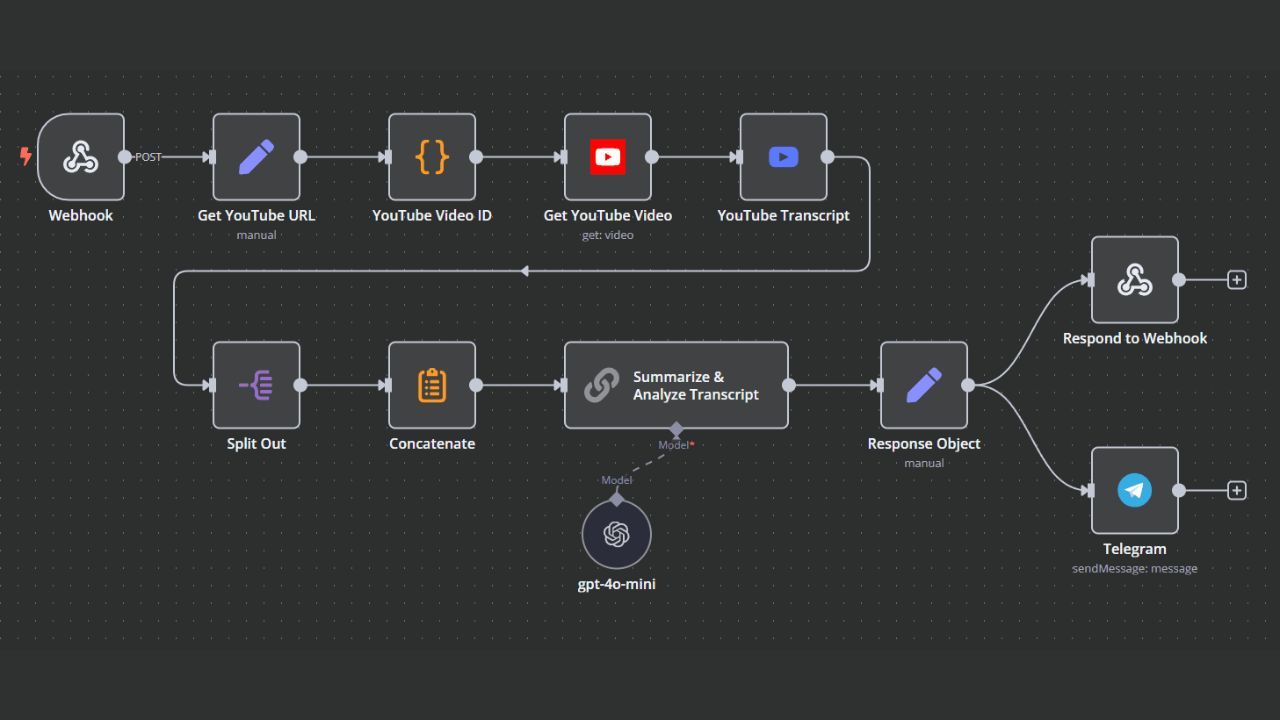CASE STUDY
8/25/2025AI Powered YouTube Video Summarization & Analysis
Client Name
•Industry
Positive results achieved
Key Results
Client Name
Client
Industry
Industry
In today’s fast moving digital ecosystem, video content dominates. YouTube alone sees over 500 hours of video uploaded every minute, making it nearly impossible for individuals and businesses to keep pace with relevant content. Whether it’s marketers tracking competitors, researchers analyzing educational material, or sales teams extracting insights from industry webinars, the common challenge is that the same videos are too long, and attention spans are too short.
Traditionally, video analysis required manual note taking or time consuming transcription services. These methods not only slowed workflows but also made it difficult to extract actionable insights in real time. As the digital marketplace demands faster, data driven decisions, companies are searching for more intelligent ways to harness video content.
This is where AI powered YouTube video summarization and analysis come into play. By automating the process of extracting key themes, generating concise summaries, and analyzing sentiment or intent, organizations can unlock value hidden in lengthy videos without the manual overhead. The findings point to three primary benefits of such an approach:
Time Efficiency: Turning a 1 hour webinar into a 5 minute digestible summary.
Actionable Insights: Identifying sentiment, intent, or call to action embedded within the content.
Scalability: Allowing teams to analyze dozens of videos daily without added effort.
The solution leverages AI models integrated with automation workflows to transform raw video content into structured insights. The workflow generally follows these steps:
Video Retrieval: The system extracts transcripts automatically using YouTube’s closed captions or through speech to text conversion.
Summarization: AI driven NLP models, such as Claude or GPT based systems, process the transcript and generate human like summaries highlighting the main arguments, data points, or conclusions.
Analysis Layer: Beyond summarization, the workflow conducts sentiment analysis, keyword extraction, and identifies recurring themes across multiple videos.
Content Delivery: The summarized insights are exported into customizable formats like Google Docs, Slack messages, or CRM notes, making them instantly usable for marketing, research, or decision making teams.
For instance, a marketing agency using this workflow could analyze competitors’ YouTube product launches, summarize the content for their team, and identify trending keywords all in under 15 minutes. Similarly, a university research group could distill dozens of hours of lecture recordings into thematic summaries, dramatically accelerating academic output.
This AI powered summarization not only automates grunt work but also humanizes the data, providing context rich outputs rather than dry transcripts.
Implementing AI powered YouTube video summarization and analysis has delivered measurable results across multiple industries.
Productivity Gains: Teams reported saving up to 70% of the time previously spent on manual note taking and video reviews.
Improved Accuracy: Summaries generated by AI achieved higher consistency compared to human driven summaries, especially when handling technical or repetitive content.
Enhanced Decision Making: Businesses could make informed decisions faster by focusing on actionable insights instead of wading through hours of footage.
Scalability: Organizations scaled content analysis from 5–10 videos per week to 50–100 videos per week, without hiring additional staff.
For example, a sales enablement team that previously struggled to analyze competitor webinars used this workflow to monitor three times more competitors, giving them a sharper edge in market positioning.
While the benefits are clear, the implementation of AI powered summarization has also brought some challenges:
Accuracy of Transcripts: YouTube’s auto generated captions sometimes produce errors, especially in noisy environments or with accents. The solution required integrating advanced speech to text models for improved accuracy.
Context Preservation: Early iterations struggled with oversimplification, where AI removed critical nuances. Adjustments were made to fine tune summarization models for different content types (educational, promotional, conversational).
Data Integration: Delivering insights into multiple tools (CRMs, Slack, project management platforms) required customized automation pipelines.
Bias in Sentiment Analysis: In certain cases, AI misinterprets sarcasm or humor, skewing sentiment results. Continuous training helped improve accuracy.
This case study highlights that AI powered YouTube video summarization and analysis is no longer just a productivity hack; it’s a strategic enabler for businesses, educators, and professionals. The solution turns a massive, unstructured video landscape into actionable, human readable insights.
Key learnings from this journey include:
Automation must be paired with contextual AI to preserve nuance and accuracy.
Delivering insights in a usable format (Google Docs, Slack, or CRMs) is as important as generating the insights themselves.
Human oversight remains valuable, especially for critical business decisions, but AI can handle 80–90% of the heavy lifting.
Organizations that embraced this system learned to think of video content not as overwhelming streams of information, but as data sources ready to be mined for growth.
The future of AI powered video summarization and analysis looks even more promising. Potential advancements include:
Real Time Summarization: Live webinars or YouTube streams could be summarized on the fly, giving businesses immediate access to insights.
Multilingual Summaries: Expanding AI capabilities to handle multiple languages will empower global teams to analyze content without translation delays.
Deeper Analytics: Future workflows could integrate visual analysis, identifying charts, slides, or facial expressions to add layers of meaning.
Personalized Summaries: Instead of one size fits all, summaries could be tailored, for example, marketers receiving keyword highlights, while executives get strategic overviews.
Cross Platform Integration: Beyond YouTube, the same framework could analyze Zoom meetings, TikTok videos, or internal training recordings.
In essence, the combination of AI and automation has transformed the way we consume video content. It saves time, enhances accuracy, and scales content analysis in a way humans alone never could. Businesses that invest early in these technologies position themselves at the forefront of innovation, turning raw video overload into a competitive advantage.